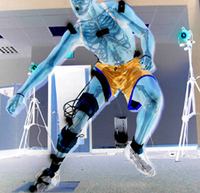
Sometimes just reading a few news articles gives you a pretty good idea of how some part of the world is working. This morning, I found two articles suggestive of the deeper problems within health care.
The first, outlines the competitiveness of certain types of residency programs and the lack of competition for others. Dermatology is all the rage, while Family Medicine basically needs to accept all that apply. Put differently, the system is designed to put the physicians who are the least competitive during schooling (translate that as you will, I will assume it means less competent for argument’s sake) into the driver’s seat for patient’s entry into the health "system".
Then, the Well Blog at the New York Times highlights an essay from University of California, Davis physician, Dr. Faith Fitzgerald, which explores the very real barrier between patients and physicians. Namely, why are patients not allowed to speak to a doctor?
Link [Bothering Your Doctor]
Here’s an experiment: Try to phone your primary care physician with a real question about your health, then try the same with your physical therapist. Which experience was easier, more enjoyable, and valuable to you?
ERIC



